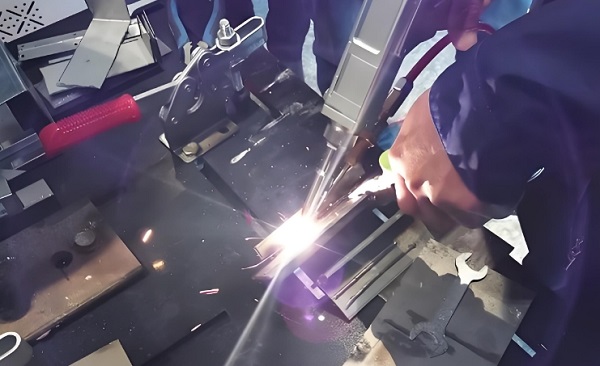What Are the Advantages of Laser Welding Machines Over Conventional Welding Methods?
For industrial buyers evaluating welding technologies, understanding the advantages of laser welding machines over traditional methods like MIG, TIG, and arc welding is crucial for making an informed investment decision. While conventional welding remains widely used, laser welding offers significant improvements in precision, productivity, and long-term cost efficiency.

Precision and Consistency
Laser welding delivers a highly focused beam with energy densities exceeding 10⁵ W/cm², enabling deep, narrow welds with minimal heat-affected zones (HAZ). This level of control is especially beneficial when working with thin or sensitive materials such as stainless steel foils, copper connectors, or aluminum battery housings. Unlike manual or semi-automated welding, laser systems provide consistent weld quality across high-volume production runs.
Speed and Automation Integration
Laser welding machines operate at significantly higher speeds than traditional techniques—often completing welds in seconds rather than minutes. Their compatibility with robotic arms and CNC motion systems allows seamless integration into automated production lines, reducing labor costs and increasing throughput. This makes laser welding ideal for industries like automotive, aerospace, and electronics where repeatability and speed are critical.
Reduced Post-Weld Processing
Traditional welding methods often produce excessive spatter, distortion, and uneven bead profiles, requiring time-consuming grinding, polishing, and rework. In contrast, laser welds are clean, uniform, and require little to no finishing work. This not only reduces labor hours but also improves overall part quality and appearance.
Material Flexibility
Modern fiber laser welding systems can effectively join a wide range of metals including steel, aluminum, copper, and even dissimilar metal combinations. With proper parameter settings, users can achieve strong, hermetic seals without compromising material integrity—an advantage especially valued in medical device and battery manufacturing.
Cost of Ownership
While the initial investment in a laser welding system is higher than that of traditional welders, the long-term savings in energy consumption, consumables, and maintenance make it a more economical choice for high-volume applications. Fiber lasers, in particular, offer low operating costs due to their high electro-optical efficiency and minimal service requirements.
For companies considering a shift from conventional welding to laser-based solutions, the decision should be based on application requirements, production volume, and long-term operational goals. Choosing the right laser welding equipment supplier ensures access to reliable technology, process support, and tailored integration options.
Recent Posts
- What are the advantages of laser welding machines in lithium battery pack production lines?
- What issues should be noted when choosing a lithium battery pack production line?
- Quality Inspection and Control of Lithium Battery Module Pack Production Line
- Cell grouping and sorting process in lithium battery module pack production line
- What are the safety hazards of lithium battery pack production lines and how can they be prevented?
INQUIRY

